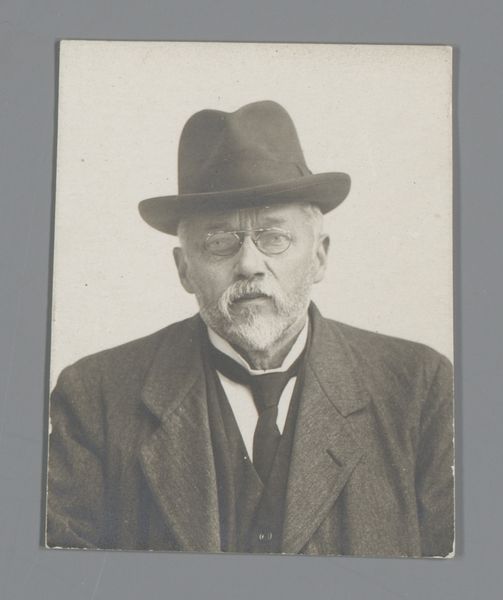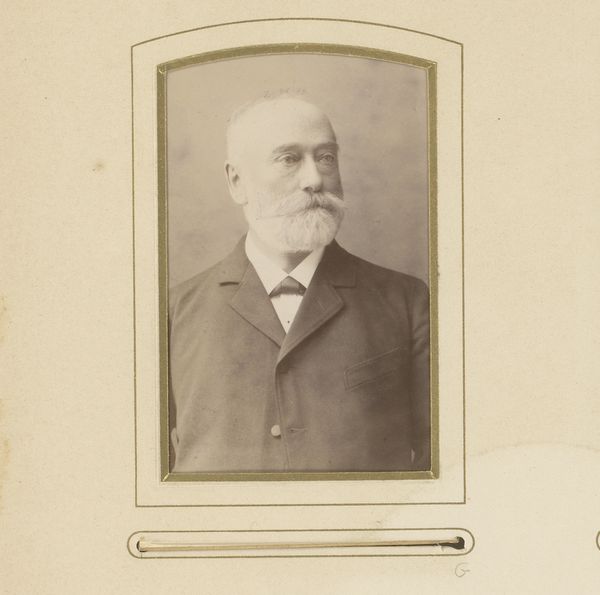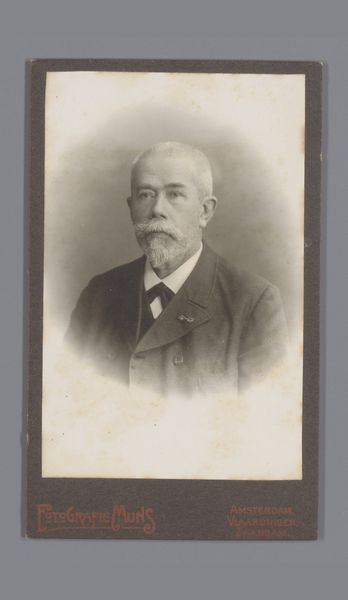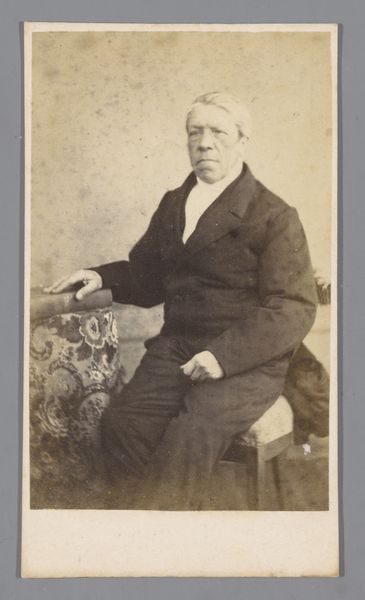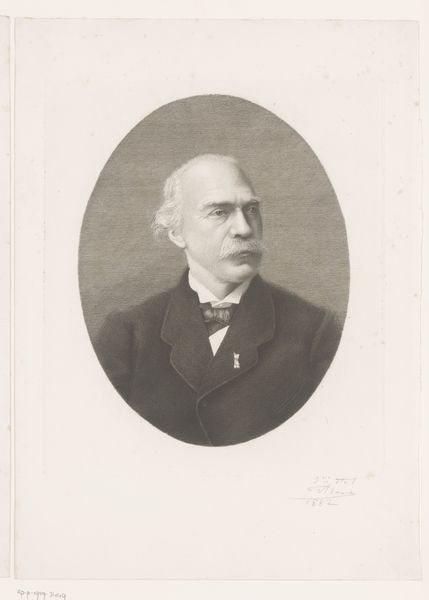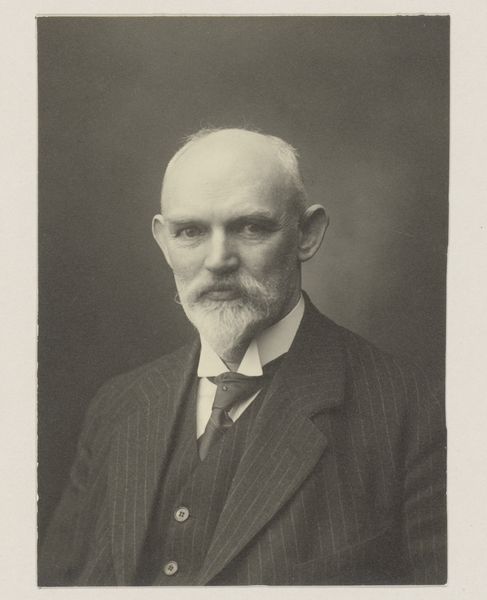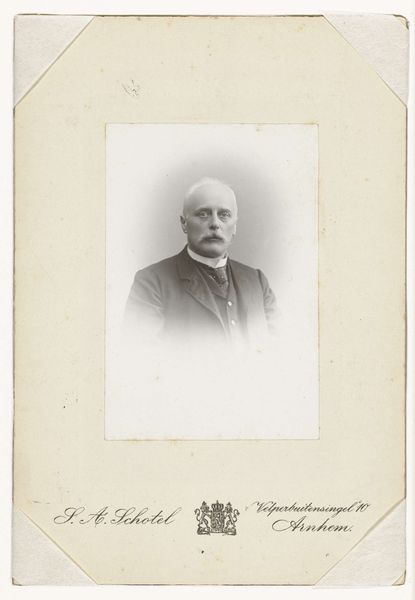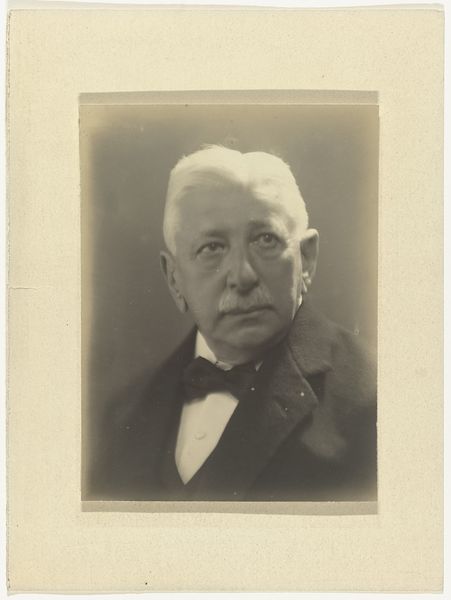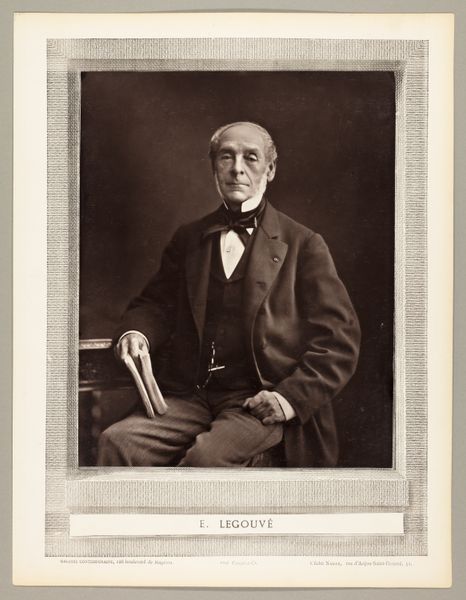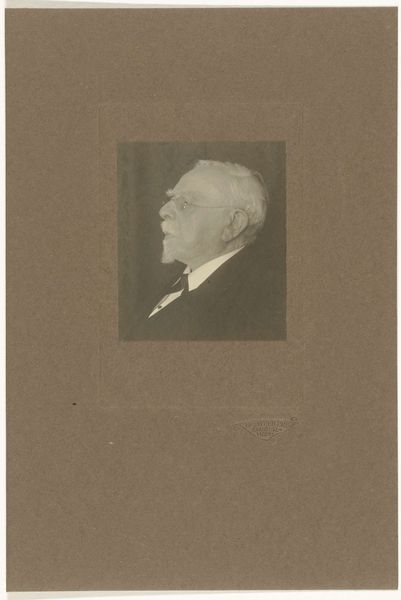
photography, gelatin-silver-print
#
photography
#
historical photography
#
gelatin-silver-print
#
realism
Dimensions: height 149 mm, width 110 mm, height 228 mm, width 350 mm
Copyright: Rijks Museum: Open Domain
Editor: Here we have a gelatin silver print titled "Portret van Uriah Ernest Maggs," created after 1955. It's a classic black and white portrait; it feels very formal and almost… staged. I wonder about the sitter’s role in society. What do you see when you look at this piece? Curator: This photograph speaks volumes about the institutional practices of memorializing figures. Uriah Ernest Maggs is presented in a very specific, respectable manner. Note the framing, the careful lighting that models his face. We might consider what position this person held, to warrant this sort of representation after 1955. Was it commissioned? Who was the intended audience? Editor: That's interesting – the idea of it being commissioned changes how I see it. I hadn’t really thought about that aspect. Does the photographic medium itself tell us anything about the social context? Curator: Absolutely. Photography at this time, especially in portraiture, carried significant weight. It offered a sense of "truth," of capturing a moment and, by extension, a person’s essence. But that very "truth" is carefully constructed. The choice of a gelatin silver print, a traditional medium, further reinforces a sense of established authority. It situates Maggs within a lineage of respected figures who were deemed worthy of photographic commemoration. We have to ask: What narratives about power are being constructed and circulated here? Editor: So it's not just a picture of a person, but a statement about his importance and role in society, carefully crafted and presented. Curator: Precisely. Considering the social and political forces at play is crucial. It helps us understand how images contribute to building collective memory and reinforce or challenge existing hierarchies. Editor: I’ve never thought of portraiture quite this way before. It’s so much more than just capturing a likeness. Curator: Exactly. Now you're beginning to see how seemingly simple images engage in complex dialogues about history, power, and representation.
Comments
No comments
Be the first to comment and join the conversation on the ultimate creative platform.

